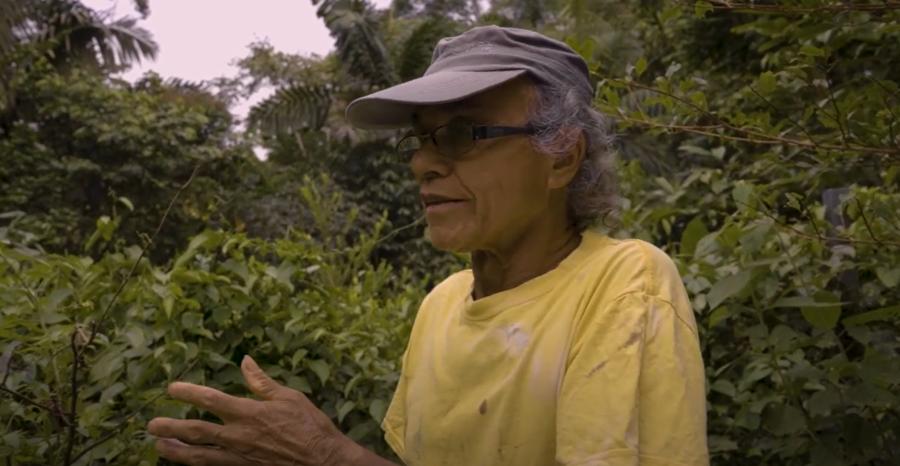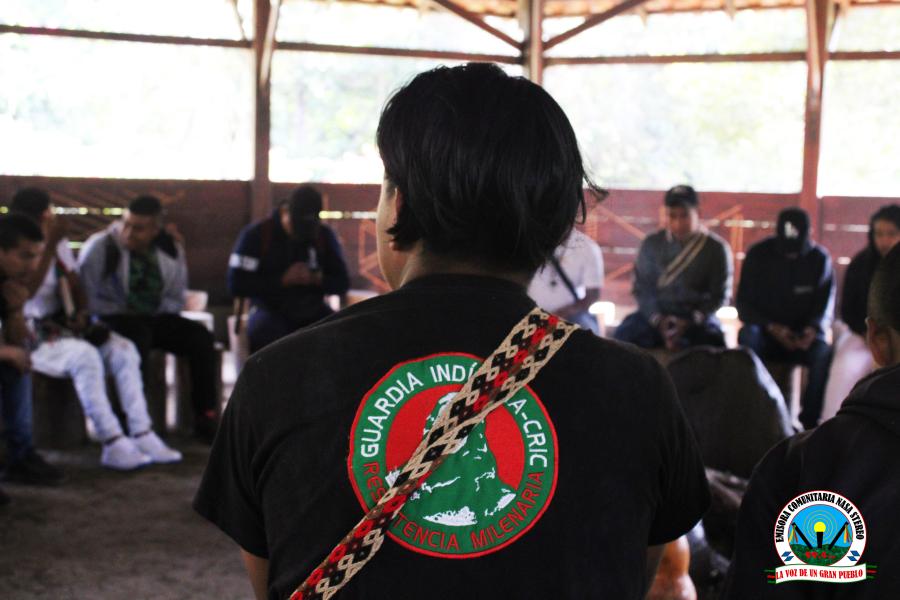Most Indians in the Americas share the same status as poor, non-Indian peasants. Many Indian organizations openly recognize the similarities between the two groups, often act in solidarity with peasants and other members of the working class, and occasionally collaborate in popular, political movements. Indians, however, through experiences such as those detailed below, have also learned to separate broad political and economic analysis from specific political parties which put analysis into action. For most such political parties, Indian culture is understood to be little more than folklore. A deep, often religious, sense of ethnic identity is regarded as an anachronism that will eventually disappear. Consequently Indians become the objects of analysis, not the architects of solutions. Such experiences, in part, explain the proliferation of exclusively Indian organizations in the Americas.
Indian communities in Latin America have learned that the dominent societies of their countries will not tolerate political self-determination. The Colombian Indian movement has confronted serious obstacles in its struggle for autonomy usually placed by the various Colombian governments and mainstream political parties. Recently serious opposition has come from unlikely quarters: left-wing military and political organizations. A case in point is the Regional Indian Council of Cauca (CRIC), and its conflicts with the country's Left.
The 200,000 Indians in southern Colombia's department of Cauca make up approximately 40% of the country's total Indian population and include two of the country's largest communities: the Paeces and Guambianos, as well as minor groups such as the Coconucos and Yanaconas. The majority of Cauca's Indian population is represented by CRIC, the oldest and most important Indian organization in the country. CRIC was founded in 1971 and since that time has undertaken successful organizational activities both regionally and nationally, as well as a series of programs in bilingual/bicultural education, agricultural production and health-care. It has also carried out aggressive land reoccupation, taking over thousands of acres of land, earning it the enmity of large land owners, traditional political parties, the Church hierarchy, the army and the security forces.
In its 15 years of existence, CRIC has become widely respected nationally as a progressive and nonpartisan organization. It has also become well known internationally, due partly to the brutal repressive measures taken against several of its leaders by Colombian governments in the late 60s and early 70s, but also because of its ideological contributions to the Latin American Indian movement.
CRIC was born out of the need and desire of the different Indian communities of the region to unify efforts in the solution of common problems. It has been non-aligned although since its beginning it has received non-Indian collaborators' support. It has always been able to maintain a position of political autonomy.
CRIC's political independence has not prevented it from playing a significant role at the national level; it has participated in all the major political movements of the last decade in Colombia and has repeatedly expressed its militant support of other Indian and non-Indian grassroots organizations' struggles. It played a significant role in the peasant struggle of the 70s, which was led by the National Peasant Association (ANUC), the only popular movement that could legitimately claim to be representative nationally. CRIC initially joined ANUC setting up its "Indian Secretariat" and establishing the first organizational contracts with Indian groups from all over the country, thus laying the groundwork for the formation of the National Indian Organization ONIC in 1982.
CRIC's experience with ANUC foreshadowed the nature of its later relations with other left-wing organizations. As ANUC became a battlefield for the different political groups vying to control it and distanced itself from the concrete needs and aims of the peasants it nominally represented, CRIC's position of autonomy came under attack. In its final stages, after leftist ideologies have taken over, ANUC argued that since the Indian movement was only a small part of the larger peasant movement, it had to be subordinate to it. Some ANUC spokesman went as far as to declare CRIC's emphasis on autonomy, derived from its view of the Indian groups' unique cultural characteristics, as a "reactionary objective," labeling CRIC's position as "racist" and "Indianist" (CRIC 1981a).
CRIC resisted the attempts by the ANUC leadership to take over the Indian movement, finally leaving the organization along with most other, regional groups disheartened by the evolution of ANUC into a sectarian, authoritarian organization. In CRIC's most important statement of its political ideology, it reflected on its experience within ANUC:
In our case, arguing that as Indians we are peasants, a certain organization tried to impose on us their political line. We believe that class considerations cannot mean the subordination of Indians to other social classes or organizations, in the struggles against our common enemies. We will only accept policies which we define jointly (CRIC 1981a).
In the same document CRIC further clarified its position:
We do not accept the idea that one specific race or social class will liberate all others. The alliance we must establish to face the common enemy has to be an alliance based on equality and the joint design of plans...(CRIC 1981a).
The strong stand for political and ideological self-determination was to have tragic consequences for many CRIC members. In the last two years, the Cauca region has become a stronghold of virtually all the country's guerilla groups - the M-19 (19th of April movement); the ELN (National Liberation Army), FARC (Colombian Revolutionary Armed Forces), the "Ricardo Franco" group (a dissident FARC group) and the "Comando Quintin Lame." The "Quintin Lame" is an all-Indian, self-defense group named after the precursor of Colombia's contemporary Indian movement. All the other groups consist almost totally of non-Indians from outside the Cauca region.
Cauca Indians view with unease the concentration of these armed groups within or close to their traditional lands, particularly when they are used by government security forces to justify repressive measures against Indians populations. This happened recently when several Paez Indians were tortured and killed by the army in the Jambalo, Caldono and Pueblo Nuevo regions. CRIC itself is also critical of most of these armed groups since they have moved into the region uninvited by the native population and have chosen to ignore the existence of the regional Indian organization as well as the local "Cabildos" (traditional Indian authorities). Furthermore CRIC views armed struggle as a mistaken political option given the present day realities of the popular movement in Colombia and the nature of President Betancour's regime.
Despite these differences, CRIC has maintained reasonably "cordial" relations with most of these organizations especially with the "Comando Quintin Lame." "Quintin Lame" was launched officially two years ago when it occupied the town of Santander de Qulichas in northern Cauca in order to protest the murder by government security forces of Paez priest and CRIC sympathizer Alvaro Ulcue. Regarding this group's activities in the region, CRIC declared in a recent communique:
This group is made up of some Indians from the local communities and it attends the meetings called by the Cabildos, in order to inform of their objectives and as a show of respect for the traditional Indian authorities. It has never contemplated armed actions against the country's armed forces or the Nation, but has limited its activities to measures of reprisal for unjust actions against Indians, playing a role of self-defense (CRIC 1985).
In contrast to its relations with Quintin Lame, CRIC's policy of independence and autonomy has led to very serious confrontations with FARC, which in the last five years has been directly responsible for the killings of 16 Cauca Indians, mostly members of CRIC. FARC is the oldest and strongest guerrilla group in the country and the first to move into the Cauca region. It began after the period of political violence in the 1950s known as "La Violencia." It is a steadfastly pro-Moscow organization with very close ties to the Colombian Communist Party and is composed of 26 "war fronts" located throughout the country; currently it is the only guerrilla group still participating in the peace negotiations begun by the Betancour government. It has established a legal political party, the "Union Patriotica," and a few weeks ago launched Jacobo Arenas, its second in command, as presidential candidate for the next elections.
In February 1981 CRIC denounced for the first time a killing of Cauca Indians by FARC; its sixth front murdered seven members of CRIC, including Jose Maria Ulcue, a leader of the organization, who had refused to follow FARC's directors, remaining loyal to CRIC. In 1982, another CRIC leader, Ramon Julicue, was killed along with his 15 year old son. Julicue had opposed FARC's attempts to replace the traditional Cabildos as local authorities in the region of San Francisco. A few days later an Indian strike force ambushed and killed in retaliation four members of the FARC group responsible for Julicue's murder. In early 1985, due to continuing threats against Cauca Indians, CRIC arranged a meeting with FARC and negotiated a pact for peaceful co-existence. A few weeks later FARC broke the agreement by killing Secundino Pacho, an ex-president of a Cabildo who had been participating in the recovery of traditional Indian lands from local, white landowners. Shortly after, in late March, FARC killed Julio Pencue Volveras, treasurer of the Cabildo of San Andres de Pisimbala and a supporter of CRIC's land recuperation program.
According to CRIC, an alliance exists between FARC and local landowners. One of FARC's traditional funding activities - called "vaccination" in the national jargon - has been to protect wealthy landowners against kidnappings and land invasions in return for hefty sums of cash. In the Cauca region FARC has "recommended" to CRIC which farms not to invade; the Indians have not been intimidated by this, and given the acute land shortage they face, have continued to take possession of farming land they consider to be rightfully theirs. This has been one of the major reasons behind FARC's policy of assassination of Indian leaders. CRIC, for its part, is not willing to give in. "We will not let any armed group tell us which lands we should recover, and which we should not. This will be decided by the Indian communities themselves, according to their needs" (CRIC 1985).
Another conflict has arisen over FARC's strategy of trying to undermine the Indian organization by pressuring Indians to switch their allegiances to them. FARC argues that the Indian Cabildos are "primitive" and "backward" institutions which must disappear so that the Indians can "progress."
The latest expression of this on-going conflict was the FARC killing, last month, of seven members of the Paez community, including Rosa-Elena Toconas, a bilingual teacher in CRIC's educational program.
The situation of the Cauca Indians is critical. They are bearing the brunt of increased governmental repression due to the uninvited presence in their region of several guerrilla groups. They also face the constant military threat of Colombia's largest armed group, which wants to impose its hegemony in the region. Against this backdrop one can understand their sympathy toward the appearance of an armed all-Indian self-defense organization. Faced with military intimidation from both the Right and the Left, armed self-defense seems to be the only way for Cauca Indians to defend their own interests.
Article copyright Cultural Survival, Inc.



